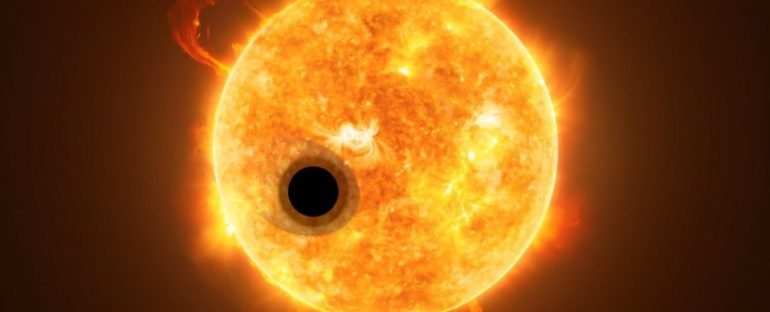One of the fluffiest exoplanets we’ve ever found in the Milky Way galaxy is challenging our understanding of how giant planets form.
It’s called WASP-107b, orbiting an orange dwarf star 211 light-years away, and it was already known as one of the lowest density exoplanets when its discovery was announced in 2017. A new analysis shows the puffy planet is even puffier than astronomers thought.
That means its core is much less massive than initially calculated, a finding that could have pretty big implications for exoplanet research overall.
“This work addresses the very foundations of how giant planets can form and grow,” said astrophysicist Björn Benneke of the University of Montreal in Canada.
“It provides concrete proof that massive accretion of a gas envelope can be triggered for cores that are much less massive than previously thought.”
Super-puff planets, as such low density planets are known, are pretty rare and strange. They are the size of gas giants, but their density is much, much lower. WASP-107b is spectacularly puffy. The exoplanet is just a little smaller than Jupiter, but its mass is under 10 percent of Jupiter’s, resulting in a density of just 0.13 grams per cubic centimetre.
The exoplanet is also perilously close to its host star. It has an orbital period of just 5.7 days, so close that its temperature is a scorching 736 Kelvin (462 degrees Celsius, or 865 degrees Fahrenheit), and its atmosphere is evaporating apace.
The new research, led by physicist Caroline Piaulet of the University of Montreal, first refined the mass of WASP-107b using four years of observations taken by the Keck Observatory to measure how much the star moved in response to the orbiting exoplanet’s gravitational tug.
Then, using this new calculation, the team performed a detailed analysis of WASP-107b’s structure. To their great surprise, they found that the solid core of the exoplanet could be no greater than about 4.6 times the mass of Earth. This would mean that more than 85 percent of the exoplanet’s mass is in its puffy atmosphere.
That’s not so strange, by itself; Jupiter’s core is thought to be around 5 to 15 percent of the planetary mass. But Jupiter is more massive overall, which means its core is more massive, too. Jupiter is also much farther from its star. This raises a lot of questions.
“How could a planet of such low density form? And how did it keep its huge layer of gas from escaping, especially given the planet’s close proximity to its star?” Piaulet said. “This motivated us to do a thorough analysis to determine its formation history.”
Until now, our understanding of the formation of gas giants has been based primarily on the ones we can study most easily: Saturn and Jupiter.
They both have chonky cores clocking in at over 10 times the mass of Earth, so astronomers thought that such a massive core was a prerequisite for gas giant formation. It would provide the mass necessary to trigger runaway accretion and rapidly accumulate as much gas and dust as possible, before there’s no longer enough of it in the protoplanetary disc of material orbiting a newborn star.
But there are clues in the WASP-107 system that point to a possible formation route for WASP-107b. Its low core mass could be one. There’s the fact that the exoplanet is evaporating, hinting that it would be much more difficult for it to form in its current close orbit.
And there’s another discovery the team made. In their long observations of the star, they found evidence of a second exoplanet – WASP-107c – much farther out, on a 1,088-day orbit. That orbit is also extremely eccentric, or oval in shape, which suggests a gravitational interaction with another body – perhaps a baby WASP-107b.
“For WASP-107b, the most plausible scenario is that the planet formed far away from the star, where the gas in the disc is cold enough that gas accretion can occur very quickly,” said astronomer Eve Lee of McGill University in Canada.
“The planet was later able to migrate to its current position, either through interactions with the disc or with other planets in the system.”
The team believes that WASP-107b is possibly one of the best examples of an exoplanet that came extremely close to runaway accretion before the process was interrupted, possibly by interactions with WASP-107c, which flung it inward towards the star.
This could make it an excellent exoplanet for studying how large a core needs to be in order to trigger gas giant formation. The team plans to revisit WASP-107b with more sensitive instruments in order to help unravel this mystery.
“Exoplanets like WASP-107b that have no analogue in our Solar System allow us to better understand the mechanisms of planet formation in general and the resulting variety of exoplanets,” Piaulet said. “It motivates us to study them in great detail.”
The research has been published in The Astronomical Journal.



